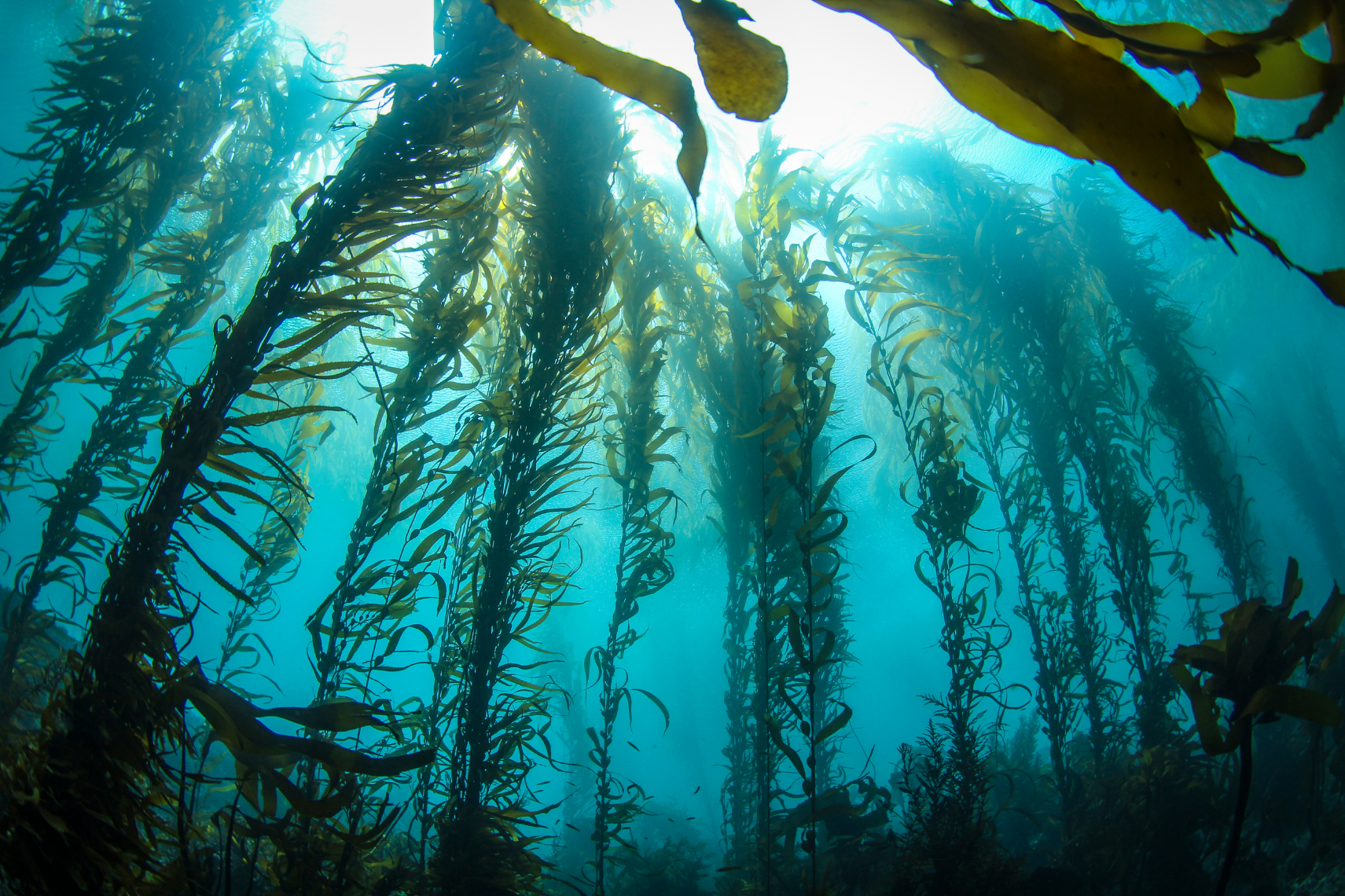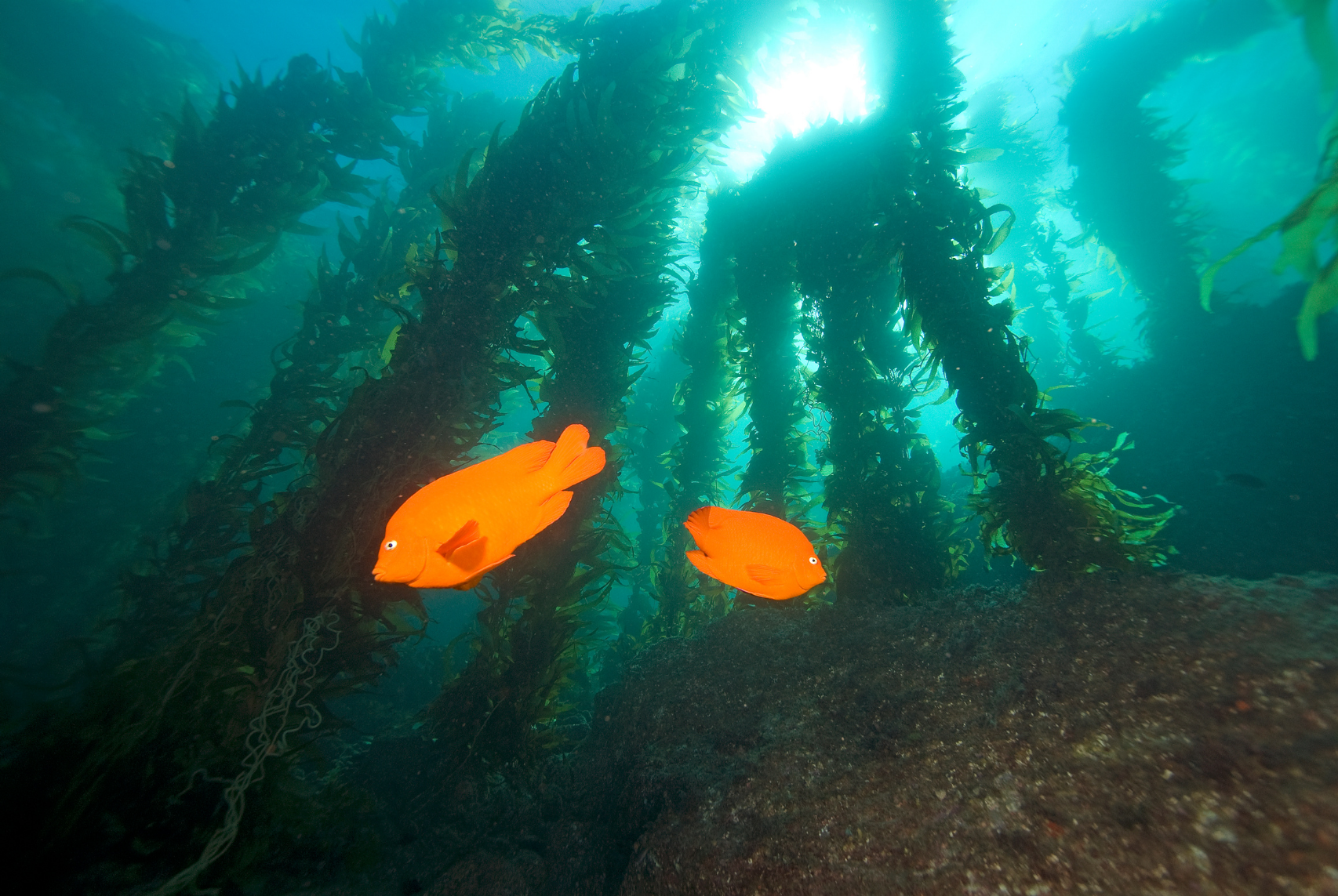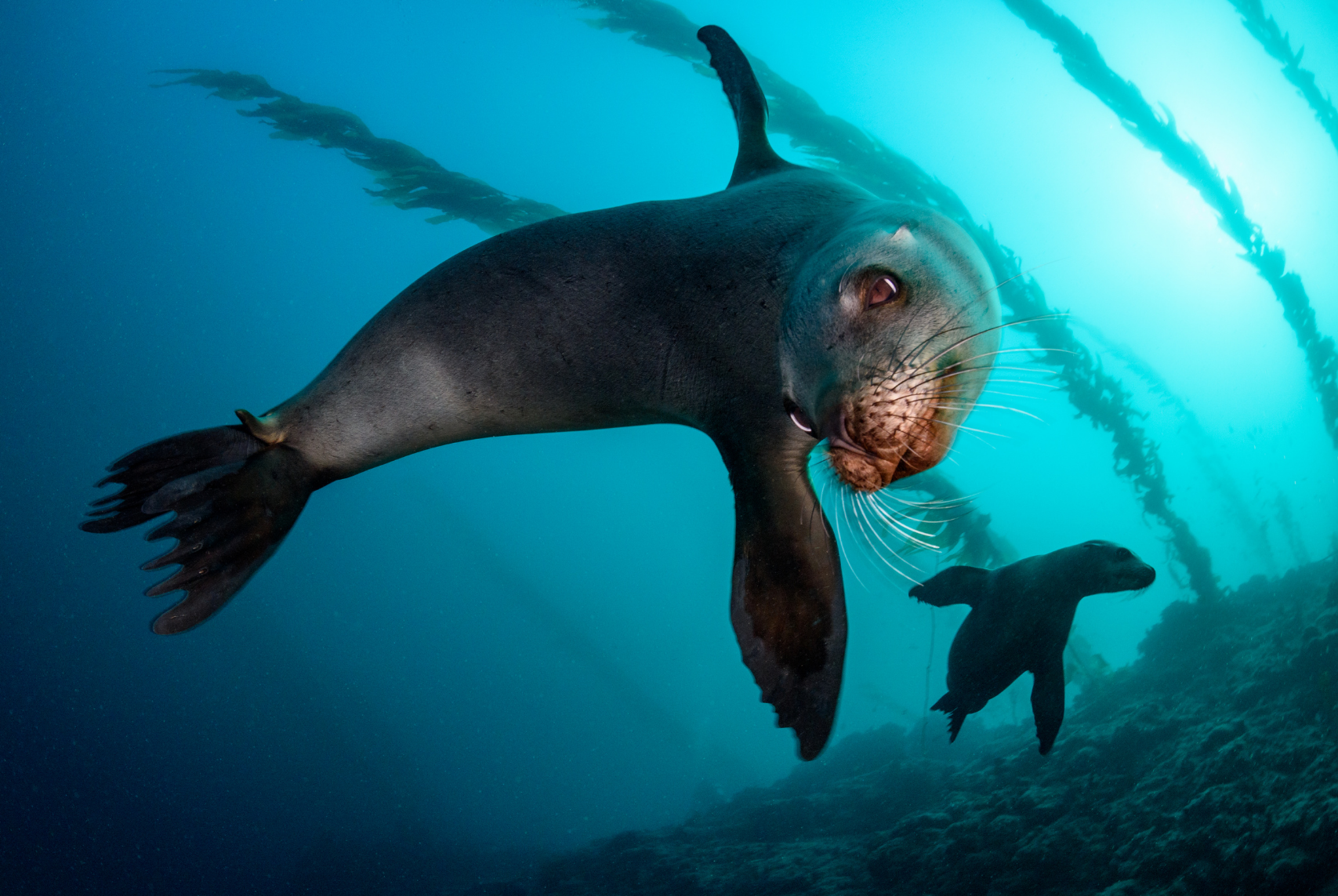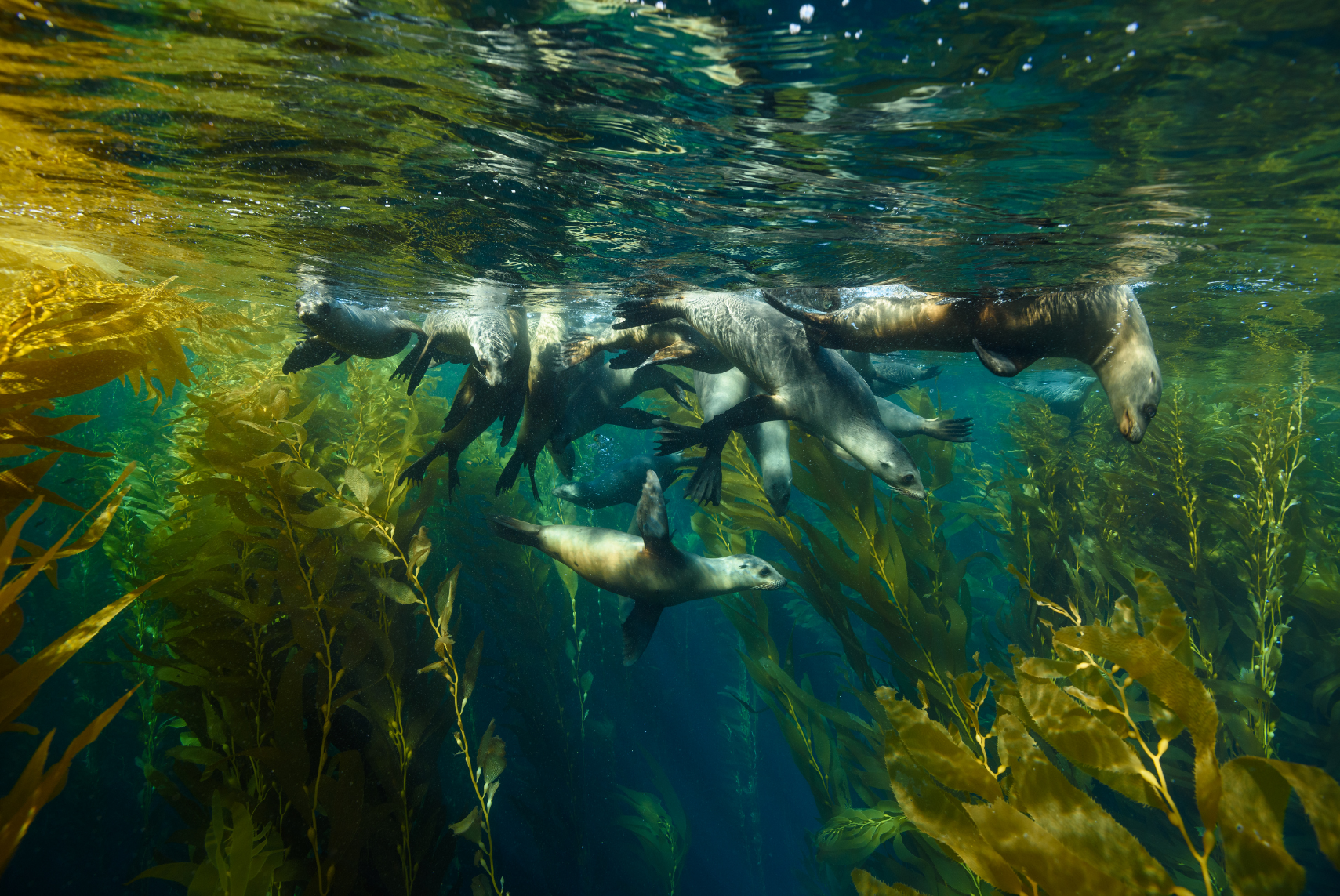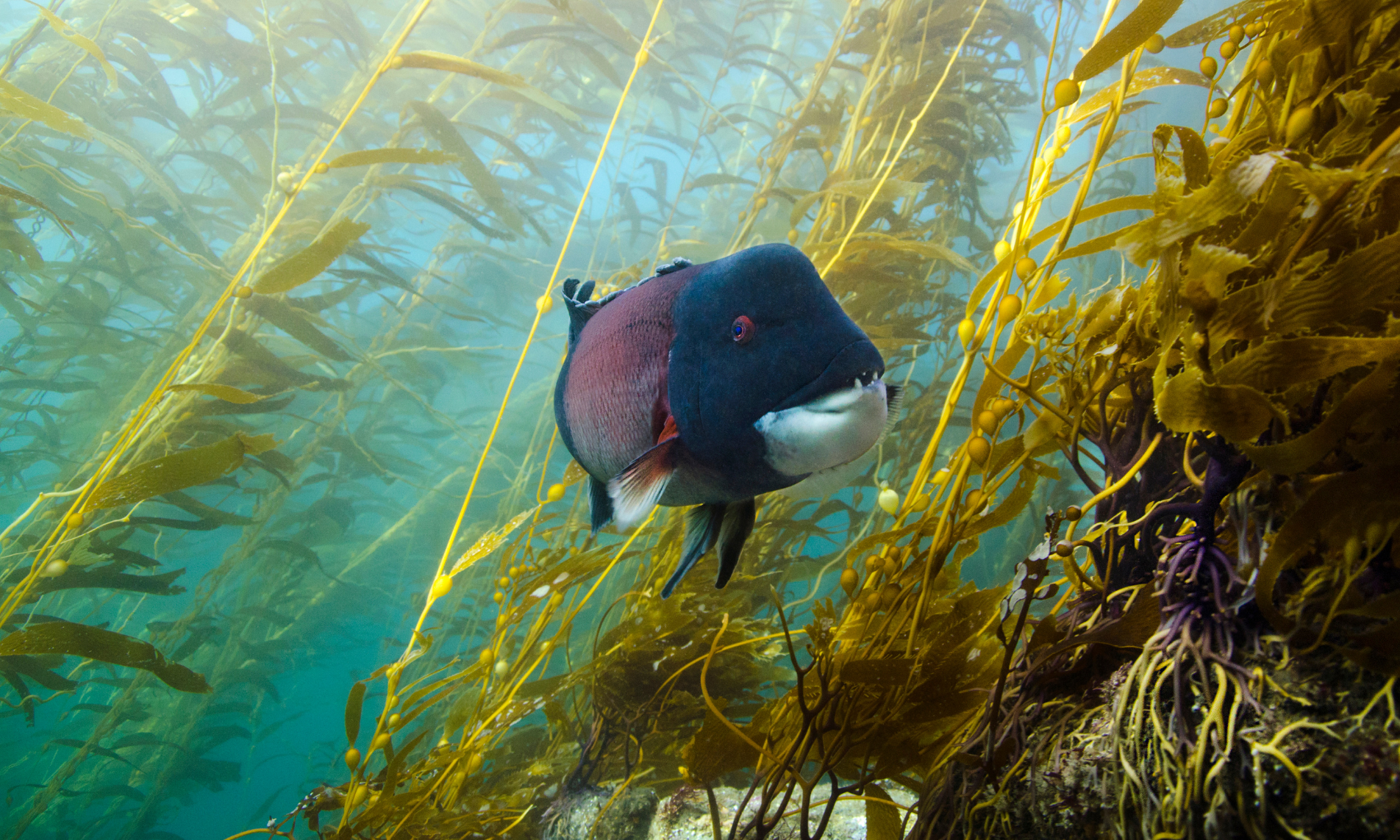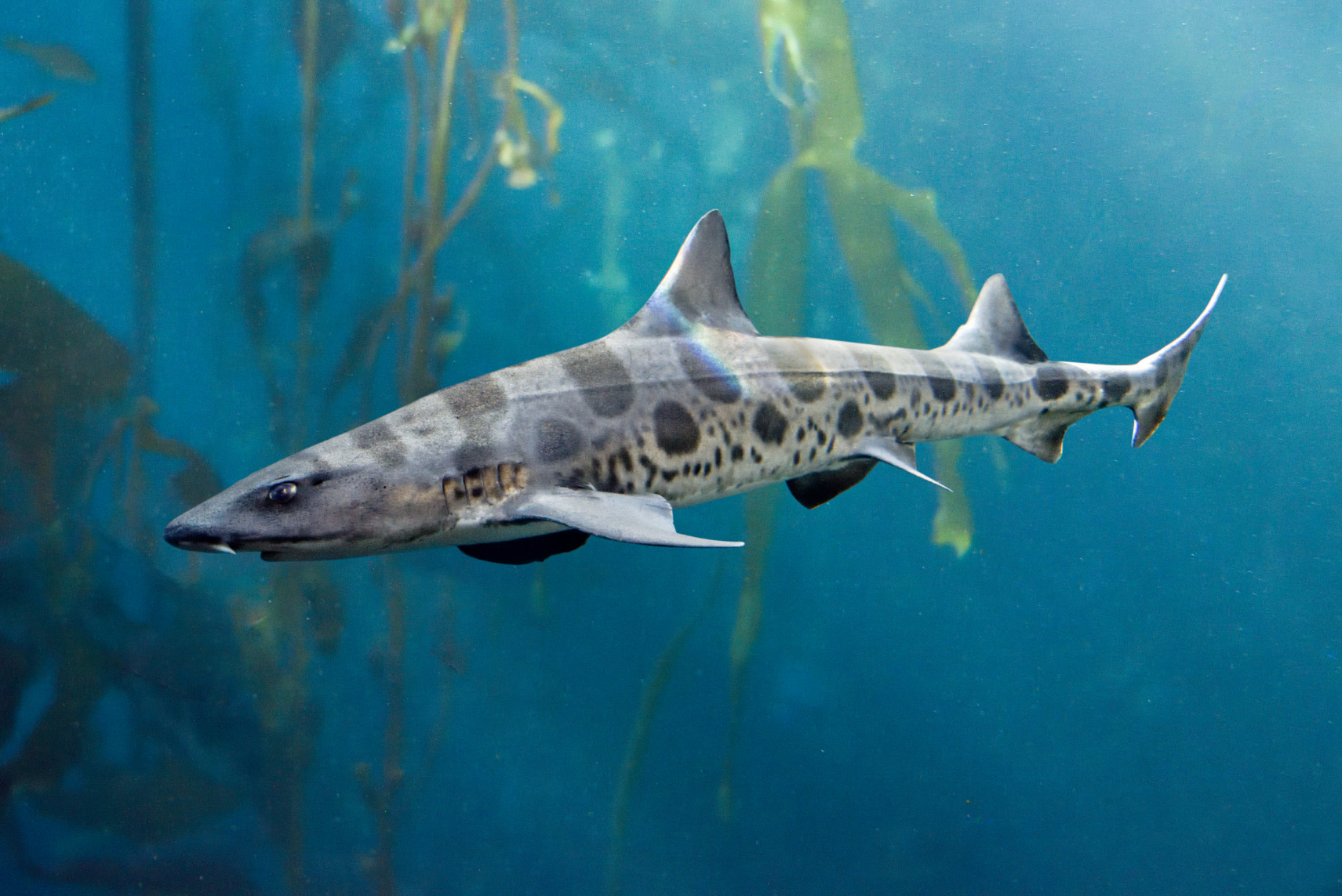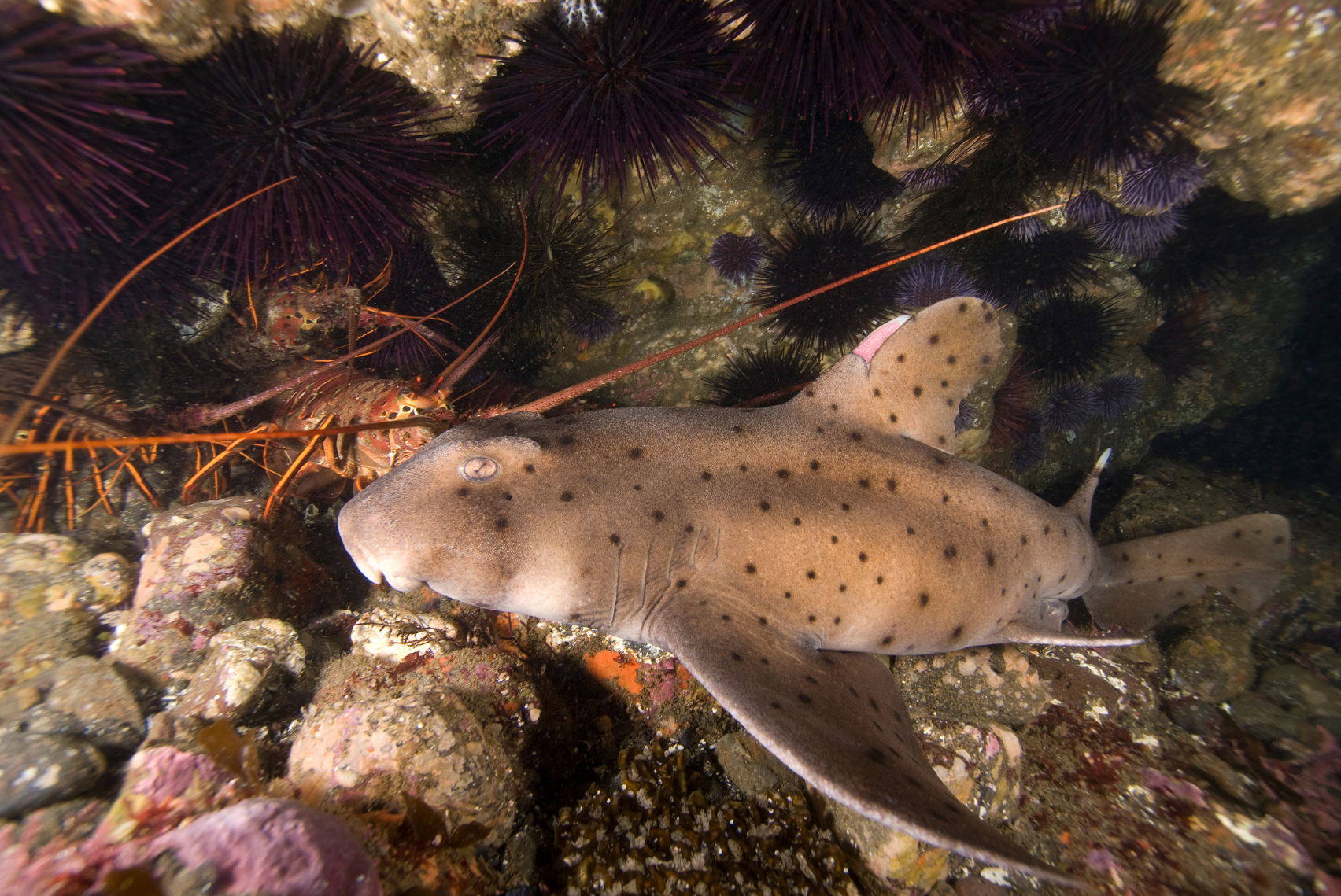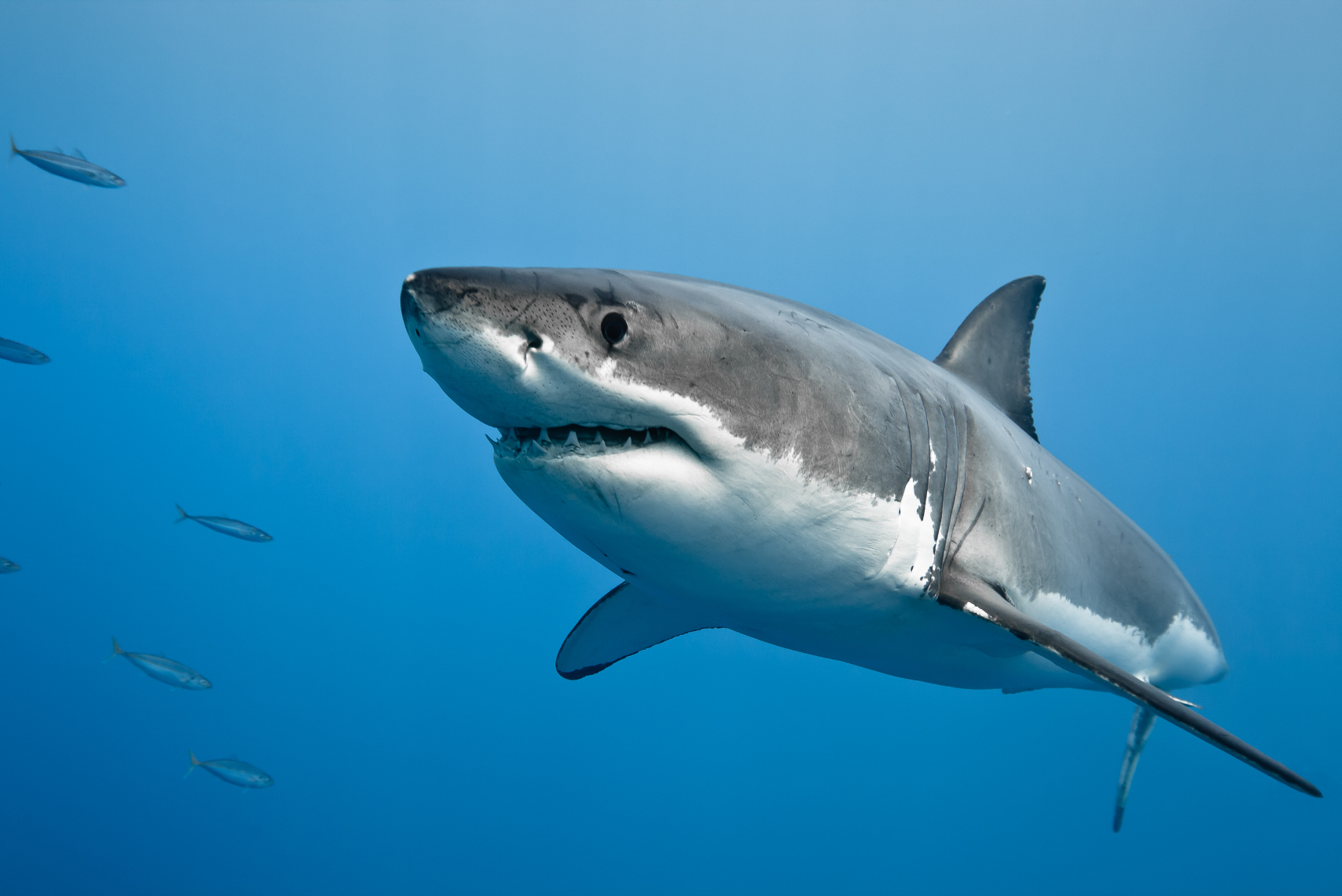Creatures of the California Kelp Forest
The kelp forests off the coast of California are known around the world. We’ve seen unworldly images that look like they’re from another planet, taken right here in our own backyard. Among a maze of kelp that reaches from the ocean floor to the surface, sunrays peek through and illuminate a plethora of unusual ocean critters.
Kelp forests are not only fascinating ecosystems, but they’re crucial for the health of our planet. Known as the “sequoias of the sea”, kelp can grow up to 2 feet per day and absorbs vast amounts of carbon dioxide. Kelp forests also comprise one of the ocean’s most diverse ecosystems, providing food and shelter for over 1,000 marine species, from tiny amphipods to playful seals and sea lions. Even gray whales frequent kelp forests to shelter their young.
So, what can a diver expect to see when visiting a California kelp forest?
Garibaldi
The state fish of California, garibaldi are iconic in the waters of Southern California. It’s rare to hop in the ocean near a kelp forest and not spot one of these bright orange fish, which are protected in the state. Although small, they’re mighty! Male garibaldi are responsible for protecting their eggs and will chase off anything that comes near – including divers!
California Sea Lion
These playful pinnipeds are a welcome sight for many divers. Although they’re large, with males reaching up to 1,000 pounds, they’re quite harmless unless provoked. The young pups are known to be curious and enjoy checking out divers, playing in the bubbles and spinning around underwater. Although sea lions are a favorite prey of nearby sharks, including baby white sharks, they have been spotted preying on smaller shark species like horn sharks. Both sharks and sea lions are incredibly important to keeping the ecosystem in balance.
California Sheephead
A type of wrasse, sheephead are a staple of the California kelp forest. When most divers think of sheephead, they picture the males, which are distinguished by a pink body with black markings on the head and tail. However, sheephead are actually all born as females, and the largest individuals transition to males later in life. Sheephead are keystone predators of purple sea urchins, making them extremely important to the health of the kelp forests. Without predators, sea urchins can take over and destroy entire kelp forest ecosystems.
Sharks
Although many species of sharks are present year-round in Southern California, it can be rare for divers to actually encounter them underwater. Sharks tend to be elusive, and the sight and sound of a diver’s bubbles generally keep them at a distance. However, there are a few species that are more common than others. Horn sharks can be spotted nestled among the rocks, and leopard sharks often patrol the sandy bottom on the outskirts of kelp forests. Although sevengill sharks spend most of their lives at deeper depths, they frequent the shallow waters around La Jolla in the spring to give birth and mate.
Possibly the most elusive of them all, great white sharks also roam the Southern California waters. Some kelp forest areas are known to be white shark “nurseries” because they shelter juveniles from predators and have an abundance of prey. Although encountering a white shark diving is near impossible, drone photographers like Malibu Artist have captured shark encounters with humans surfing, paddleboarding and swimming. These videos confirm what we, at Shark Allies, already knew - sharks are far from man-eating monsters, and are simply swimming through their own ocean home.
Although California kelp forests absorb carbon dioxide, promote biodiversity and provide food and shelter for a plethora of species, we’re losing these habitats around the world. Kelp in some areas of Southern California have been reduced by 75 percent, and Northern California has had their kelp canopy drop by 95 percent in recent years. Pollution, climate change and overfishing have taken a toll on kelp around the globe.
Shark Allies is dedicated to protecting these sacred areas off the coast we call home. By shopping at Shark Cafe, you’re supporting the protection of the ocean and the animals that live there.


